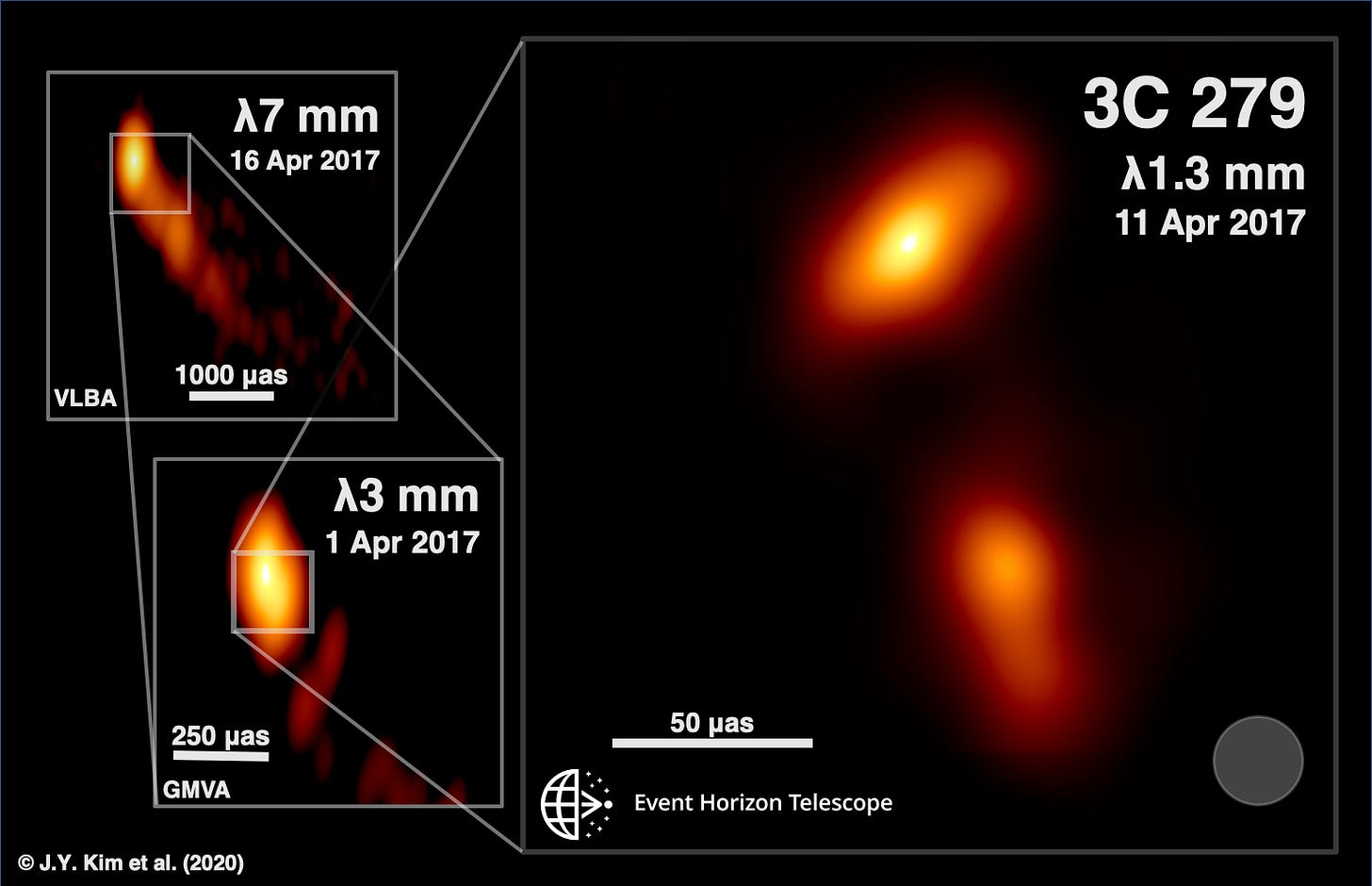Quasar Jets - What's in the Heart of 3C 279? Astronomy News with The Cosmic Companion
Quasar Jets in 3C 279 are seen in unprecedented detail, revealing a violent history and unexpected features.
Quasar Jets in 3C 279 are seen in unprecedented detail, revealing a violent history and unexpected features.
Quasar jets imaged by the Earth Horizon Telescope (EHT) show galactic movements in unprecedented detail. Movements of vast quantities of gas, racing away from Quasar 3C 279 at speeds near the speed of light, reveal signs of a violent past.
In 2019, the The Earth Horizon Telescope (EHT), a network of radio telescopes, released the first-ever image of the region surrounding a black hole. Now, astronomers examining data from this study focused their sights on a different object, a quasar named 3C 279.

The first detailed looks at quasar jets — 3C 279, imaged by the Earth Horizon Telescope. Image credit: EHT
Jae-Young Kim from the Max Planck Institute for Radio Astronomy (MPIfR) in Bonn led a study examining the jet seen emanating from 3C 279. The team traced this feature back to its source, where radiation violently fluctuates over a wide range of frequencies.
Quasars are distant galaxies, centered on highly-energetic supermassive black holes. These objects are powered by vast quantities of gas falling into these regions, fueling an enormous output of radiation. Under the right conditions, these objects can form jets, which race away from their source at great speeds, following powerful magnetic fields.
“Relativistic jets in active galactic nuclei (AGN) are believed to originate from the vicinity of a supermassive black hole (SMBH), which is located at the center of the galaxy. Understanding the detailed physical processes of jet formation, acceleration, collimation, and subsequent propagation has been one of the major quests in modern astrophysics,” researchers described in an article published in Astronomy and Astrophysics.
The SMBH at the heart of 3C 279 contains as much mass as a billion suns. It sits roughly five billion light years from Earth, seen in the constellation Virgo. The pair of jets race away from the supermassive black holes that formed them at velocities close to the speed of light.
Read more: https://bit.ly/Quasar-Jets-3C279


